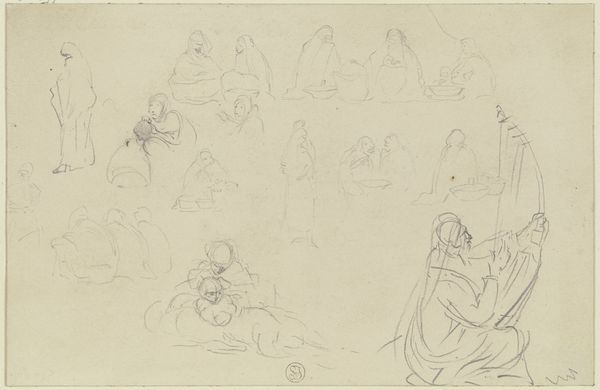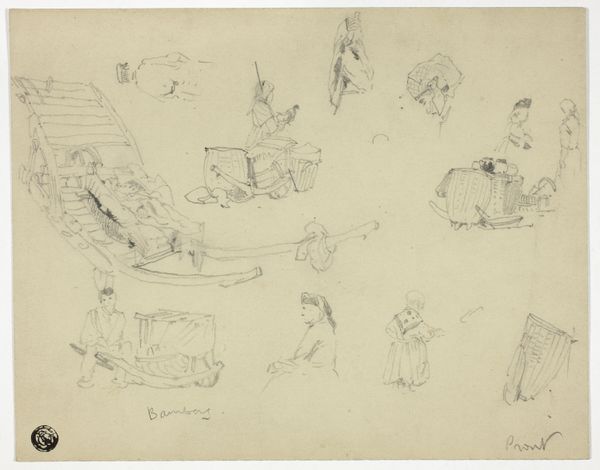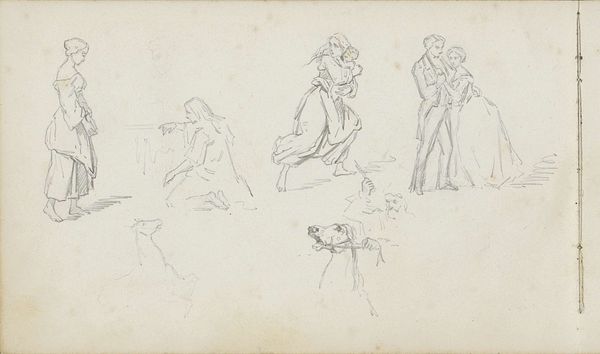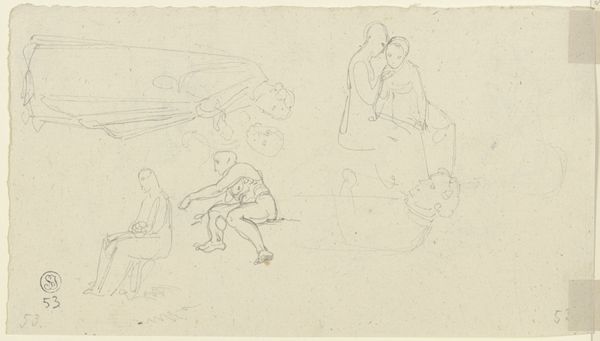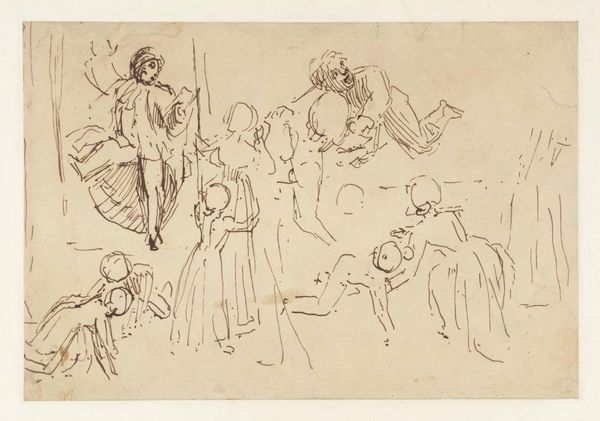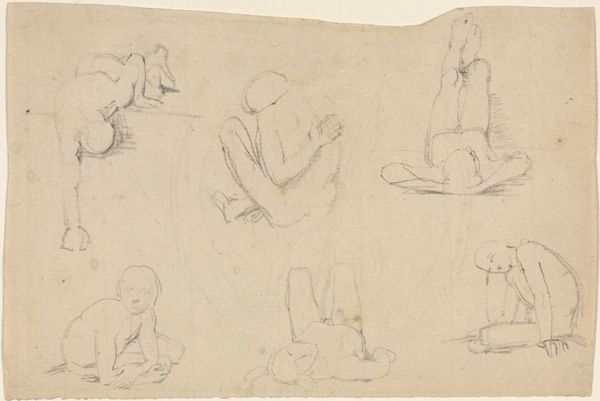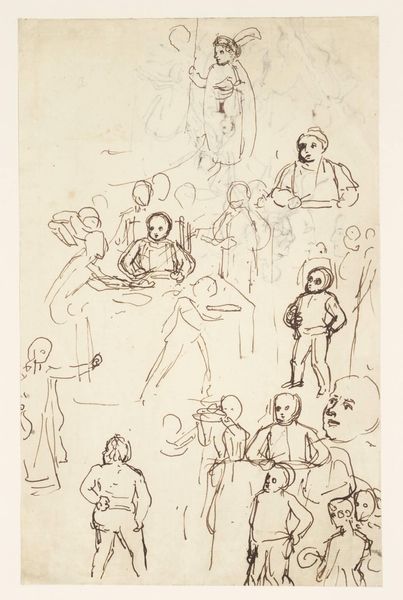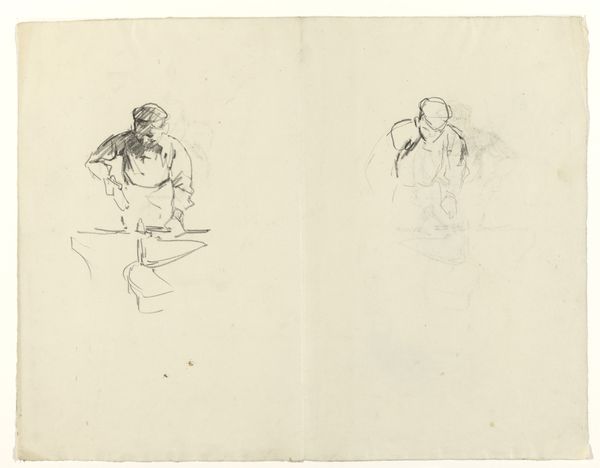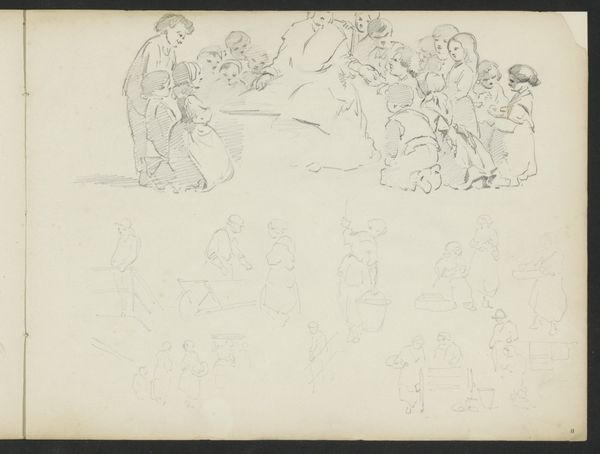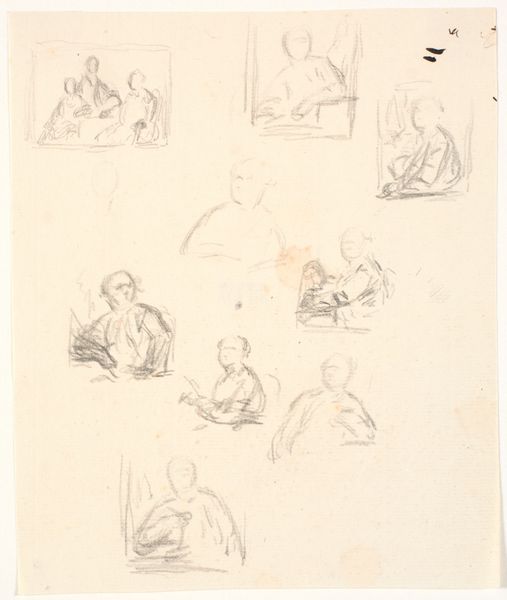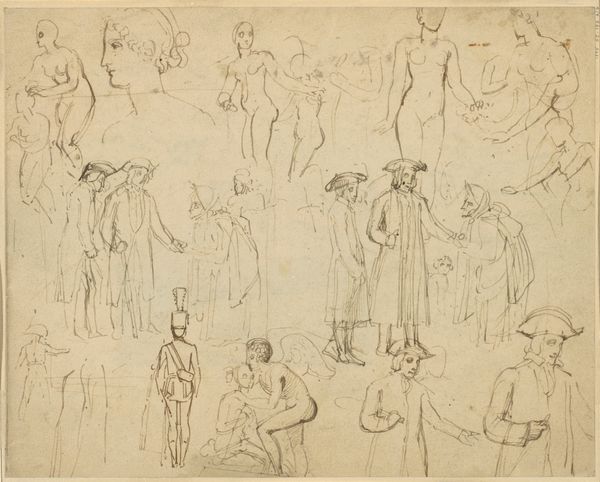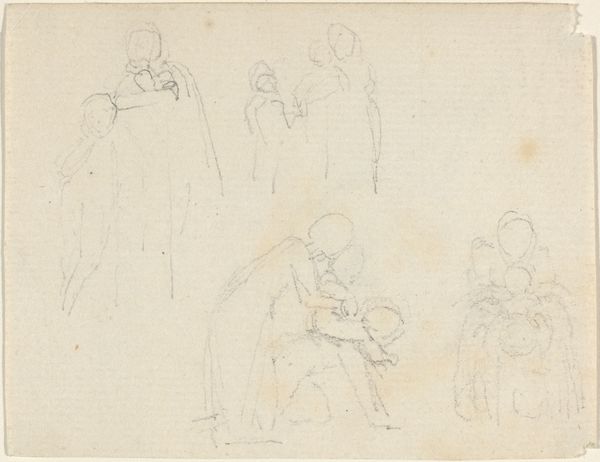
drawing, pencil
#
drawing
#
landscape
#
figuration
#
romanticism
#
pencil
#
orientalism
#
genre-painting
Copyright: Public Domain
Editor: This is "Studienblatt - Szenen aus Ägypten," or Study Sheet - Scenes from Egypt, a pencil drawing created around 1850 by Wilhelm Gentz. The collection of sketches feels quite intimate, almost like glimpses into everyday Egyptian life. What jumps out at you? Curator: I see here an intriguing example of 19th-century Orientalism. Gentz, a German artist, is participating in a broader European fascination with the “Orient.” It's vital to question the gaze through which these scenes are represented. Were these intended as objective studies, or were they filtered through a romanticized, perhaps even exploitative, lens? Consider the implications of depicting these scenes as a series of studies rather than finished artworks. What public function does this piece serve? Editor: That’s a really interesting point about the ‘Orientalist’ lens. I hadn't thought about the potential for exploitation. Do you think that the sketches romanticize Egyptian life? Curator: Possibly. Romanticism and Orientalism were closely intertwined. The emphasis on the "exotic" and the "timeless" often served to obscure the complexities and realities of life in Egypt at that time. Were these studies, for example, intended to fuel larger, more ambitious paintings meant for display in European salons? To reinforce colonial narratives? Editor: It’s a bit troubling to think about the role art played in supporting colonialism. Curator: Precisely! It urges us to consider art’s connection to power structures and how imagery can shape public opinion. By deconstructing pieces like these, we can learn a lot about how perceptions are formed and the agendas they might serve. What did you learn about the role of sketching during this era? Editor: I now realize that even sketches held public weight and potential sociopolitical messaging. Thank you, this gave me so much to think about regarding art's purpose. Curator: My pleasure! It's crucial that we see how art intertwines with cultural and political histories to more critically assess artwork today.
Comments
No comments
Be the first to comment and join the conversation on the ultimate creative platform.
